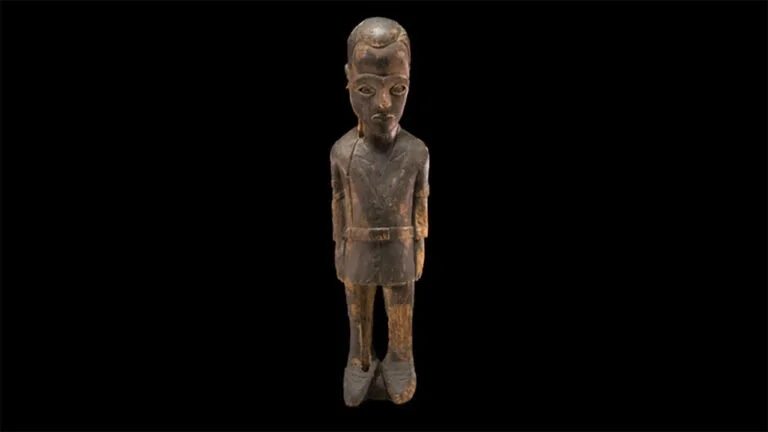VMFA x NFT Controversy
Diviner’s Figure representing Belgian Colonial Officer, Maximilien Balot, 1931.
The Virginia Museum of Fine Arts (VMFA) has recently faced backlash over its handling of a Congolese sculpture in its collection, particularly regarding the use of NFTs (non-fungible tokens). This colonial-era sculpture, created by Congolese artisans, holds profound cultural and historical significance to the Democratic Republic of Congo.
At the heart of the controversy is the Congolese Plantation Workers Art League (CATPC), an artists’ collective advocating for the return of the sculpture to its homeland. VMFA has consistently denied requests to loan the artifact back to Congo, prompting CATPC to take matters into their own hands. In an innovative yet contentious move, the collective created and sold NFTs based on the sculpture’s image. Their goal? To raise funds for land restoration projects in Congo and symbolically reclaim cultural heritage they argue rightfully belongs to their people.
This move has sparked debates on cultural ownership, ethical repatriation, and intellectual property rights. VMFA criticized the creation of these NFTs, labeling them unauthorized and a breach of trust. The museum claims CATPC used images of the sculpture taken from its website without permission, raising questions about whether museums hold intellectual property rights over digital reproductions of artifacts in their collections. Conversely, CATPC defends their actions as a necessary step in reclaiming heritage, circumventing traditional gatekeepers, and channeling profits back into their community.
The controversy highlights a broader ethical dilemma facing museums that are exploring NFTs. Proponents see NFTs as a valuable revenue source, especially for institutions recovering from financial hardships caused by the COVID-19 pandemic. For example, museums like the Uffizi Gallery and the Hermitage Museum have successfully ventured into the NFT market, offering exclusive digital editions of iconic artworks. Yet critics caution against monetizing cultural artifacts with colonial histories, arguing it could perpetuate existing inequities and exacerbate tensions over ownership and restitution.
Environmental concerns also complicate the integration of NFTs into museum practices. Although advancements like Ethereum’s transition to a more sustainable proof-of-stake system have mitigated some environmental impact, questions linger about the true accessibility of NFTs. Critics argue that NFTs often cater to wealthy collectors rather than democratizing access to art, especially when tied to artifacts with fraught colonial pasts.
The VMFA’s case underscores the complex intersections of technology, ethics, and cultural heritage in the evolving art world. As museums grapple with how to balance innovation with responsibility, this debate serves as a crucial reminder of the need for thoughtful engagement with the communities whose histories and artifacts they steward.
